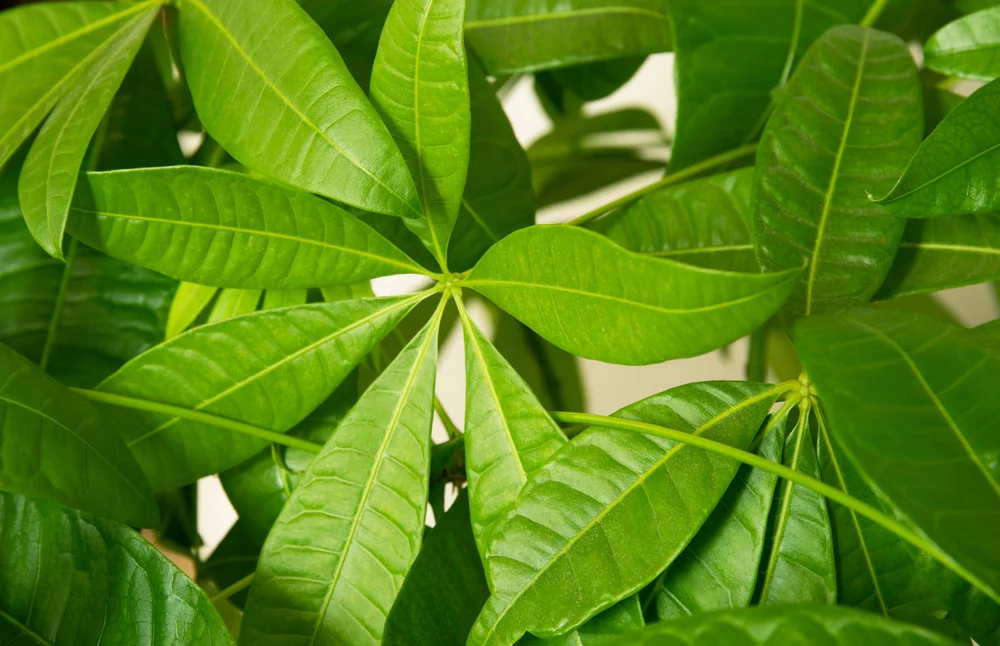Common Problems Faced by the Money Tree: Know the Pachira Aquatica

Transform Your Space with Expert Home Garden Development Services
April 25, 2024
10 Plants You Didn’t Know Were Epiphytic Plants
June 20, 2024Common Problems Faced by the Money Tree: Know the Pachira Aquatica
Common Problems Faced by the Money Tree , scientifically known as Pachira aquatica, is a popular houseplant known for its braided trunk and lush, green leaves. It’s not just prized for its aesthetic appeal; in many cultures, it is believed to bring good luck and prosperity. Despite its relatively easy care requirements, the Money Tree can face several common problems that can affect its health and appearance. Understanding these issues and how to address them can help you keep your Money Tree thriving.
1. Overwatering and Root Rot
Symptoms:
- Yellowing leaves
- Mushy or black roots
- Foul smell from the soil
Cause: Overwatering is the most common problem for Money Trees. It can lead to root rot, a condition where the roots become waterlogged and begin to decay.
Solution:
- Ensure the pot has proper drainage holes.
- Allow the top inch of soil to dry out before watering again.
- If root rot is detected, remove the affected roots and repot the plant in fresh, well-draining soil.
2. Underwatering
Symptoms:
- Wilting or drooping leaves
- Dry, brittle leaves
- Brown leaf tips
Cause: Underwatering can stress the plant, causing it to lose its vibrant appearance.
Solution:
- Water the plant thoroughly until water drains out of the bottom of the pot.
- Maintain a regular watering schedule, adjusting frequency based on the plant’s needs and the environment.
3. Pest Infestations
Common Pests:
- Spider mites
- Mealybugs
- Scale insects
Symptoms:
- Tiny webs or white cottony masses on leaves and stems
- Yellowing or speckled leaves
- Sticky residue (honeydew) on leaves
Cause: Pests can be introduced from other plants or through open windows.
Solution:
- Isolate the affected plant to prevent the spread.
- Use insecticidal soap or neem oil to treat infestations.
- Regularly inspect the plant for early signs of pests.
4. Light Issues
Symptoms:
- Leggy growth (long, thin stems with sparse leaves)
- Leaves turning yellow or brown
- Slow growth
Cause: Insufficient light can hinder the Money Tree’s growth, while direct sunlight can scorch its leaves.
Solution:
- Place the plant in bright, indirect light.
- Avoid direct sunlight, especially during the hottest part of the day.
- Rotate the plant periodically to ensure even light exposure.
5. Temperature and Humidity
Symptoms:
- Curling or browning leaves
- Drooping leaves
- Leaf drop
Cause: Money Trees prefer warm, humid environments. Exposure to cold drafts, sudden temperature changes, or dry air can stress the plant.
Solution:
- Keep the plant in a location with stable temperatures, ideally between 65-80°F (18-27°C).
- Increase humidity by using a humidity tray, misting the plant, or using a humidifier.
- Avoid placing the plant near air conditioning vents or heaters.
6. Nutrient Deficiencies
Symptoms:
- Pale or yellow leaves
- Stunted growth
- Leaf drop
Cause: Lack of essential nutrients can lead to poor health and growth.
Solution:
- Fertilize the plant every 4-6 weeks during the growing season (spring and summer) with a balanced, water-soluble fertilizer.
- Reduce fertilization in the fall and winter when the plant’s growth slows down.
7. Leaf Spot Diseases
Symptoms:
- Brown or black spots on leaves
- Yellowing around the spots
- Premature leaf drop
Cause: Fungal or bacterial infections can cause leaf spot diseases, often due to high humidity and poor air circulation.
Solution:
- Remove affected leaves to prevent the spread of the disease.
- Improve air circulation around the plant.
- Avoid overhead watering; water the soil directly instead.
By being attentive to these common issues and addressing them promptly, you can ensure that your Money Tree remains healthy and continues to be a source of beauty and good fortune in your home. Regular monitoring, proper care, and a little bit of knowledge can go a long way in maintaining the vitality of your Pachira aquatica.

